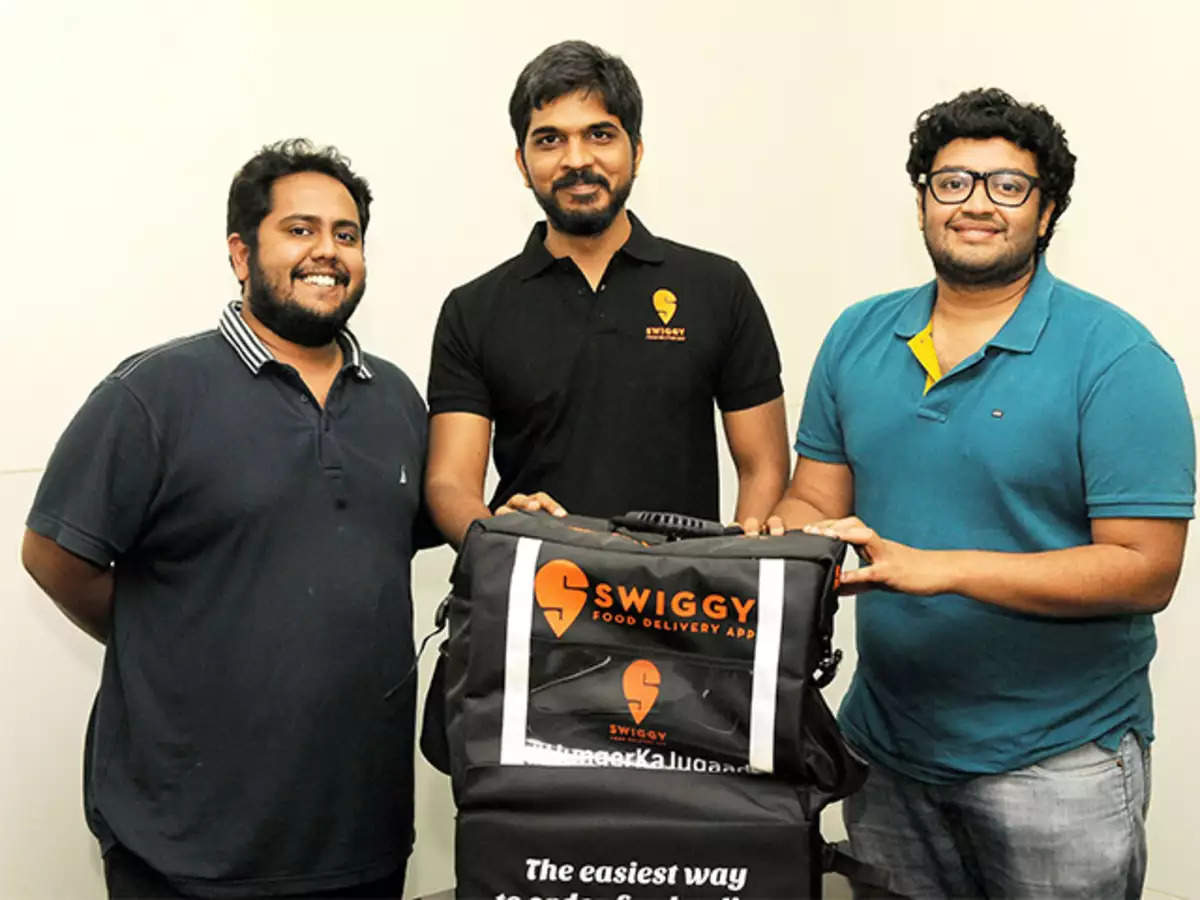Swiggy may deliver food in 9 mins, but turning profitable took almost 9 years!
Swiggy has emerged to be one of the very few multinational food delivery services to become profitable as of March 2023.

Leap to Profitability
Since March, local food aggregator Swiggy has been profitable, opening the door for food tech firms that have long battled with high operational costs to generate a profit.
The CEO of Swiggy acknowledged his happiness at this accomplishment and emphasized the crucial elements that contribute to the business’s profitability.
Swiggy’s CEO and founder- Sriharsha Majety, said that the company’s intense emphasis on innovation and outstanding implementation helped it attain profitability, which takes into account all corporate costs but excludes employee stock options.

The online meal delivery company has also made “strong progress” toward the financial success of its Instamart quick-commerce operation.
In the coming weeks, we should reach revenue neutral for this three-year-old company.
Swiggy entered the meal delivery market in 2014 when a group of friends, Rahul Jain, Nandan Reddy, and Sriharsha Majety, agreed to launch the company.
Despite the increasing acceptance of online meal ordering, many are questioning the industry’s economics, claiming it to be an unworkable business model, according to Majety.
How Swiggy Turned Profitable?
Swiggy’s journey to profit had been characterized by a succession of tactical choices and creative solutions to the problems presented by the market for food delivery.
To gain a firm presence in the market, the company has over the years concentrated on improving customer experience, streamlining processes, and broadening its reach.
Customer-focused Strategy
Swiggy’s success is largely due to its unwavering commitment to providing clients with a seamless and enjoyable experience.
The business has constantly made investments to enhance its user experience, accelerate delivery times, and uphold quality standards.
Swiggy has been able to draw in new customers while retaining a large client base by placing a high priority on customer satisfaction.
Broadening Horizon through Innovation
To access additional revenue sources, Swiggy has broadened its product offerings beyond conventional meal delivery.
The business has launched solutions like Swiggy Genie, which let customers order groceries, prescription drugs, and other necessities online and have them delivered.
To further diversify its revenue streams, Swiggy has also entered the cloud kitchen space and started working with premium brands The company is making progress in winning over customers, with particularly good results in tier 2 and 3 areas.
Restaurant Collaborations
Swiggy can provide clients with a variety of cuisine alternatives because of the solid relationships it has developed with cafes and food establishments around numerous locations.

Swiggy has successfully established itself as a one-stop option for meal delivery by bringing on board well-known regional restaurants as well as well-known restaurant brands, catering to a variety of client tastes.
Operations and Technology
Swiggy’s continued focus on utilizing technology to improve operational effectiveness has been essential to its financial success.
To increase order accuracy and shorten delivery times, the organization has built a strong logistics network, optimized delivery routes, and used advanced data analytics.
These technical developments have improved Swiggy’s cost efficiency while simultaneously raising client happiness.
Dineout and Instamart paved the way
With over 21,000 partner restaurants across 35 locations, Dineout is currently the market leader in the dining out category thanks to Swiggy’s acquisition of the company last year.
Particularly thrilled about the direction of our rapid commerce business, Instamart, since our expenditures in food delivery are beginning to pay off handsomely.

One of the top companies in the worldwide rapid commerce market is Instamart. We’ve also made significant strides toward the financial health of the company, and we expect to reach a contribution balance for this three-year-old company in the next few weeks, according to Majety.
Of course, in 2020 it was projected that India would spend over $600 billion on food. However, home-cooked food was mostly responsible for this. In India, the market for food services, which are classified as restaurant food or non-home-prepared meals, is still very underdeveloped and accounts for only 10% of total food consumption.
Days after US-based investment firm Invesco reduced Swiggy’s value to $5.5 billion in a single day, the company’s food delivery arm announced that it had turned a profit.

Layoffs and Their Impact
Majety blamed “over-hiring” for the 380 layoffs of the company’s 6,000-person staff in January of this year.
Swiggy also shut down its food delivery service at the same time because it was unable to find the right “product market fit.”
Not even two weeks after the layoffs, the company added several new directors to its board, including Shailesh Haribhakti, president of Shailesh Haribhakti & Associates, Mallika Srinivasan, of TAFE, and Sahil Barua, managing director and CEO of Delhivery.
Along with shuttering its meat delivery service, Swiggy also ended its premium food delivery service, Handpicked.
In a share-for-share transaction, the company also sold its cloud-based kitchen business, Swiggy Access, to Kitchens@ in March of this year.
Since then, the food aggregation has also charged all of its subscribers a Rs 2 service fee.
With this small fee, Swiggy—which fulfills over 1.5 million orders daily—stands to amass a sizable sum that it will put towards its main line of business.
According to Swiggy’s financial year 2022 statistics, its losses increased by 227 percent, or 2.24 times, to Rs 3,628.9 crore from Rs 1,616.9 crores in FY21.
In FY22, expenses totaled Rs 9,748.7 crore as opposed to Rs 4,292.8 crore in the previous fiscal year. Despite this, Swiggy recorded sales of Rs 5,704.9 crore, an increase of just over two times over the previous fiscal year.
Growth in numbers
Since FY22, Zomato has increased its market share for meal delivery by almost 13%, establishing a stable duopoly.
On the strength of the recently launched Zomato Gold customer loyalty program, the Gurugram-based company is currently the industry leader with a 56% market share, compared to Swiggy’s 44%, according to a previous note from HSBC.
Executives at the company were optimistic that it would achieve (EBITDA) break-even by the second quarter of 2023–24, despite its losses widening to Rs 346.6 crore for the quarter that ended in December (FY23) from Rs 63.2 crore in the year-ago period.

Zomato’s third-quarter sales increased 75% to Rs 1,948.2 crore from Rs 1,112 crore during the same time the year prior.
The decline was attributed to a general slowdown in food delivery services, a boom in eating out, and an increase in premium travel.
According to its accounting records filed by the Registrar of Companies, its income increased by 2.2 percent to Rs 5,705 crore during FY22 as compared with Rs 2,547 crore in FY21.
Conclusion
The company’s incredible trajectory in the food distribution sector is reflected in Swiggy’s declaration that its food division is now profitable. Swiggy has attained sustainable success by emphasizing the client experience, making investments in its technological infrastructure and processes, and expanding its service offering.
Proofread & Published By Naveenika Chauhan





